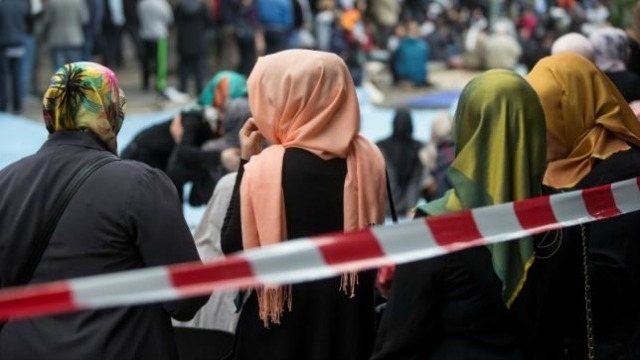NEW YORK – The European Court of Justice ruling, allowing employers to ban hijab, has been casting shadows on Muslims worldwide.
Critics of the ban consider it part of multiple legislation in Europe targeting Muslim women’s outfit, as part of a broad campaign of discrimination against Muslims globally.
Many Muslim racial justice, social justice, and human rights activists in the United States consider the recent ban another example of increasing xenophobic and extremist anti-Muslim bias.
“I’m not surprised. Various European countries have been trying for decades to ban hijabs,” Tannaz Haddadi told AboutIslam.
“Western ideals of democracy and individual freedom are fading as race-centered movements that seek to exclude people that are in any way ‘different’ take hold. Women are always at the forefront of these issues either because they are targeted or because they are leading the fight for justice.”
Activist Hind Makki, an interfaith and anti-racism educator, told AboutIslam that the ruling opens the door for employers to engage in discriminatory hiring practices.
“The recent decision by the ECJ is not only discriminatory but also short-sighted. It allows a back-door for employers who aren’t supposed to outright discriminate against Muslim employees but can now claim they don’t hire Muslim women in hijab because their customers don’t want to see that,” said Makki.
“It is short-sighted because European law now clearly declines to protect the religious rights of European Muslim citizens.”
The case started after Asma Bougnaoui, French Muslim, and Samira Achbita, a Belgian, were both fired by their employers.
The two Muslim women brought their claims of discrimination to court. Their cases eventually reached the European Court of Justice (ECJ), the highest court in the European Union.
The EJC court set down a decision that allows employers to ban the wearing of hijab by individual employers who are “pursuing a policy of political, philosophical or religious neutrality in their relation with clients.”

Supremacist Colonialism
Human rights activist, Asha Noor, explained how the ban will primarily affect Muslim women and promote restrictive policies meant to maintain Eurocentric white supremacy.
“These restrictions on religious expression impact Muslim women predominantly. Making it a broad restriction against all religious expression makes it seem less of an issue targeted at Muslims, but that’s exactly what it is,” Noor told AboutIslam.
“The rise in global nativism and white supremacy has resulted in the banning of Muslims from traveling, establishing places of worship in some instances and now dressing the way they choose. In the name of freedom, liberalism and pluralism we are being restricted and micromanaged to fit the western white normative identity.”
Author and activist Jamillah Kareem asserts that the ban shows how Europe is still steep colonialism guised as secularist neutrality.
“European powers never respected the hijab as a religious symbol but constructed it as a symbol of the “inferior” other,” Kareem told About Islam.
“In the past, they used it to justify colonialism and stripped Muslim lands of their resources. Now it is an excuse to keep down and push out the very people whose resources and bodies were exploited to build European nations.”
College student and writer Israr Ibrahim concludes that arguments favoring assimilation hands over power to worship and express religious identity to those seeking to erase Islam from Western culture. She encourages Muslims to stand strong.
“Western Muslims can attest to the work put in to integrate in systems that continue to demonize us no matter our “patriotism,” Ibrahim told About Islam.
“We will fail that initiative every time whenever we give power to an Islamophobic authority to dictate the parameters of our worship, cultures, and ultimately existence. Our newfound anger should be redirected towards organizing our communities for a more anti-colonial and transformative politics.”

Religious Subjugation
The EJC also included crosses in the upholding of the ban. Patheos Muslim editor Dilshad Ali points out the oversight by the court in assuming equal standards for religious apparel.
“How do you even put crosses, turbans, headscarves and other clothing items in the same category when some are believed to be religious requirements, and others are considered to be displays of faith,” asked Ali.
“That’s an entirely different debate.”
Namira Islam, the executive director of the Muslim Anti-Racism Collaborative, points out the inclusion of crosses in the allowable ban dually veils the direct targeting of Muslim woman and generalizing religious observations without considering spiritual priorities.
“Including the crosses lends a semblance of neutrality,” Islam told AboutIslam, “but wearing them is not a religious mandate. Many Muslim women wear the hijab to fulfill a religious requirement, which is not easily set aside.”
“By correlating crosses with hijabs, the court sets a white Christian standard on visibly religious garments.”
